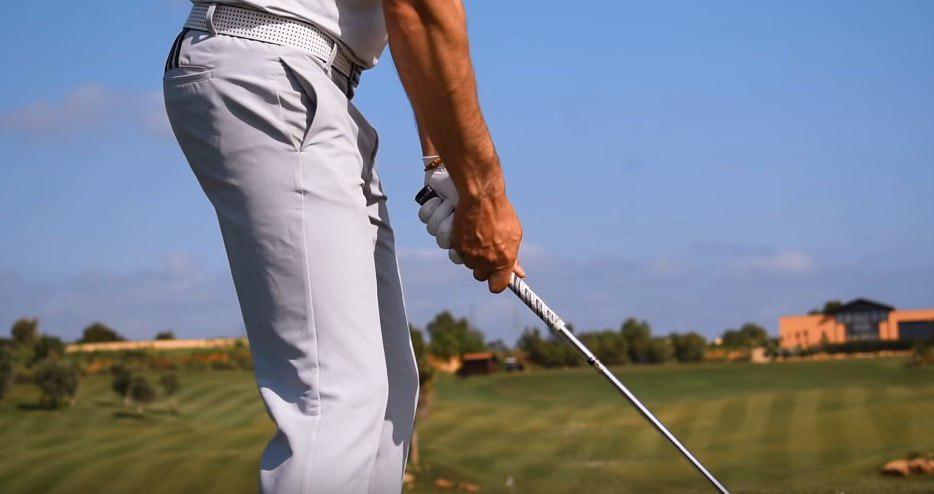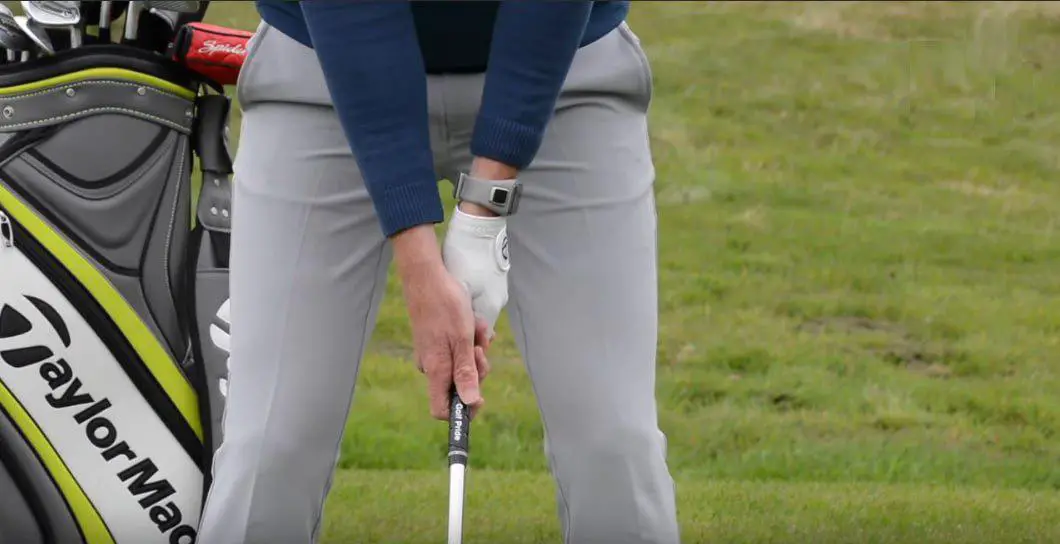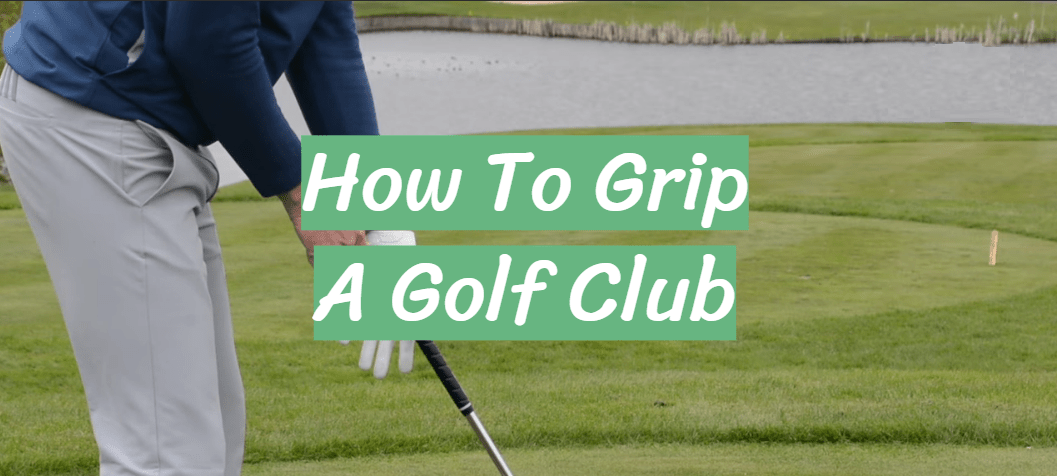The perfect grip for golf, it’s a different question, a debatable question. But look, what is the perfect grip for golf? The perfect grip for golf is something that allows you to produce a consistent impact that allows you to strike the golf ball consistently and get the desired ball flight that you want. Let’s take a look at people like Paul Azinger, David Duval, maybe even Jordan Spieth. All extremely different holds on the golf club. Now look, would you want to change their grip because it looks very different, or it’s strong or it’s very weak? You wouldn’t because it allows them to produce the input that they want.

There isn’t a perfect group for golf, but there are certain things that if you get it right with how you grip the golf club, it makes it easier. And there are certain things that we don’t like to see, and there are certain things that we like to see that could certainly help produce a better impact. So if you do have a poor grip or it’s influencing your ball flight, there are certain things we’re going to go through that’s going to make it easier.
Table of Contents
Main Issues
There are three main issues that we see and just a quick note on the best players in the world. You could line up all hundred top players in the world at the moment and they all have slightly different grips. It’s all about matching your grip to the shot that you want to get for consistency.
The Golf Club Gets Very High
We see multiple things but these are the three nasty ones that really do hinder the golf swing. The first one we see is when the club gets very high in the lead hand. The shaft is quite vertical there and we can see when you open out the hand there, that the club is running very much up the palm, up the top by the thumb, and it’s missing out the fingers. This is great for putting if you want to do that action there, but as soon as getting that club around the body, it’s not going to be very dynamic. So that’s the first one that we don’t want to see.
Deep Interlock
The next one is deep interlock. There are obviously different ways you can hold a golf club, but when we see a deep interlock. And again, there’s no freedom in the grip at all, they’re all out of position there. And it gets you very much in the palms when you do that. This deep interlock is when people get the little finger and the index finger here and they jam it right in there. There’s almost too much in there as opposed to a slight interlock, so it just puts it out of position.

Very similar to the first one. They tend to go hand in hand. It’s like you’re holding onto a hammer almost when you’re doing that.
Trail Hand
The last one is when we’ve got someone who’s slicing the golf ball or a high weak ball flight, is when they get their trail hand and they get it too much around toward the target. We have to do everything that we can to square the loft up. And if we don’t quite square the loft up, it can cause a slice. If you do square the loft up, it goes very high and weak.
So those three things really that you can see all the time that cause problems with golfers every day.
How To Avoid Problems
If you can avoid those three things, and we’re going to tell you how to avoid those three things in a moment, then you are going to build a better grip and you’re going to be more consistent when you’re striking the golf ball.
High Handle
Let’s start with the high handle. Ben Hogan’s very famous book, Modern Fundamentals, he talks about holding the golf club up in the air like so with the right hand and then placing the lead hand on the golf club. So by doing this, it’s a really good way of doing it, making sure your leading edge is in a good position there. But getting, you know, fidgeting around a little bit maybe, but getting it so that the club is running in the fingers like so and then you can just literally close the hand on the golf club like so.

When you get down to the golf ball then you can see that the shaft angle is dropped down a little bit. It’s not up in the air like you’re hitting a putt, it’s down on the ground like so. So from here it’s just so much easier to get that mobility that you need in those wrists.
Correct The Deep Interlock
You just need to work really hard, bring in the palms and sort of clap clap and shuffle them around like so. Then have the same feeling as that when you’re on the golf club. So your palms are facing each other and then from there literally you close your fingers on the golf club and then you can go into your interlock. So it’s a way of really making sure the palms are facing each other, but also running in the grip correctly.
It is a good grip for a lot of people, but often when people go for the interlock it’s when the problems happen. We don’t want to come underneath. We’re going to go from the side, get these hands working this way. Massively going to help that impact and consistency.
Right Hand
The right hand, the weak right hand as we call it because it weakens the loft on the club face. So we just mentioned there about bringing the palms in facing each other. Now the problem we often see, when we get someone who’s got this weak grip, right hand on top, we ask them to back it around here. By the time they’re ready to pull the trigger and take the club back, they’re back on top again. So what we’re going to do with this one is we’re going to take the set up, good left-hand obviously there. You have to get the palm and actually face it out. Not from coming in facing the other palm. You have to face it out in front of you. And then bring the hand in underneath and then close it on the golf club.
In addition to improving your performance when you have a good grip, the feel in the fight is also improved when you find a grip that best suits you and your swing.
The Most Common Golf Grips
There are many ways to grip a golf club correctly, but unfortunately, there are just as many ways to grip it incorrectly. What is best for you may not be best for others.
When we turn to the professionals, we also see that they use different types of grips, which they then make their own to adapt to their body and create the most effective and consistent swing possible.
We recommend that you look for a trainer to help you find the grip that is best for you. However, to give you good knowledge and explore different variations, we have listed the most common grips for a golf swing.
Overlapping Grip
Probably the most common grip for both professionals and amateurs. The handle became popular thanks to Harry Vardon in the early 20th century. The right little finger is placed on the small space between the left hand’s index finger and middle finger.
Famous players: Arnold Palmer, Ben Hogan, Phil Michelson, Henrik Stenson, Sergio Garcia.
Advantage: Golfers with large and/or strong hands often have a preference for overlapping grips. The grip provides a strong interaction between the hands without restricting their movement, allowing the golfer to release the club in the stroke fully. Some golfers think that this is a nicer way to hold the club than a locking grip.
Interlocking Grip
This grip is formed by hooking the right little finger together with the left index finger so that the hands hook together.
Famous players: Jack Nicklaus, Tiger Woods, Rory McIlroy, Ricky Fowler.
Advantage: Often recommended for players with smaller hands. The locking handle brings the hands together even more and reduces too much movement in the wrists. It can also help the player have a firm grip on the club without applying so much pressure, which makes it easier to relax more during the swing.
Disadvantage: Some players find the locking grip uncomfortable and limit their ability to move their hands and wrists freely during the swing.
Baseball or 10-finger Grip
Famous players: Only a few successful players still use a baseball grip during their professional careers. However, many used it when they started playing golf as children and then switched to overlap or lock the more they played.
Advantage: When you start playing golf, it is often easier to use a baseball handle. It is easier to refer to other activities when holding something like baseball wood or tennis rackets. Some players claim that they hit longer with a baseball handle and sometimes even get better contact with the hit. However, we do not have any statistics to support this.
Disadvantage: This often restricts the hands’ mobility and cohesion and can lead to you tapping the ball uncontrollably from right to left.
Get a Perfect Golf Grip
Once you have found your style of how your right and left hand should work together in the grip, there are also different styles for the relationship of the hands to the centerline of the shaft and the direction of the clubface. There are basically three positions that can also be adjusted to find the perfect golf grip that suits you, your physical abilities, and your swing.
Strong Grip
Strong, in this case, has nothing to do with how strong you keep the club. This means that you have turned your hands to the right of the shaft. If you see more than two knuckles on your left hand, you have a strong grip. If you see more from the side of the palm than from the top of your right hand, you have a strong grip.
Potential benefit: Many golfers consider this the most natural way to hold a club. A strong grip gives you great freedom to rotate the club, which can help achieve a natural release on the hit and reduce the risk of a disc. It is easier to achieve a low, controlled ball field and a draw with a strong grip.
Disadvantage: A nice and effective move can turn into a terrible and uncontrollable hook if the hands are too active. Golfers who have a strong grip on the club often play with a slightly closed blade in the stroke (pointing to the left), making them more likely to hit a hook. It can also be difficult to hit a high ball field with lots of spins if you have a strong grip.
Weak Grip
The opposite of strong – the hands are turned to the left of the shaft. If you can only see an ankle on your left hand, you have a weak grip. If you can see more of the top of your right hand than the palm of your hand, you have a weak grip.
Potential Advantage: If you are struggling with a hook or have difficulty hitting a fade/slice whenever you want, a weak grip can help. Since the blade stays more open when hitting, it may also be easier to hit a higher ball field with more backspin.
Disadvantage: A weak grip often results in many golfers hitting a slice and having difficulty getting a free and effective release for hitting. It can also limit the rotation of the arms and thus feel like an uncomfortable position.
Neutral Grip
A neutral grip is often considered the ideal grip for most players because it lines the hands with a square or vertical face. You usually have a neutral grip when you see two knuckles on your left hand when you stand up with the club to the ball. Recently, however, it has become more and more popular to focus less on a neutral grip because more emphasis is placed on adapting the grip to each player’s physical condition, and what is neutral for one person is not necessarily neutral for another.
Possible advantages: If you otherwise have a “neutral” swing, a neutral grip gives you a greater chance of having a straight blade at the moment of impact. A neutral grip cannot in itself cause a disc or hook, but it does offer plenty of room for steering and working with different types of ball paths, right to the left and left to right.
Disadvantages: Actually, none, except that players sometimes find it unnatural or unpleasant.
Note that all descriptions are based on right-handed players.
Trying to imitate someone else’s perfect golf grip is like saying that their clothes fit you perfectly. A perfect golf grip will take into account your build and movement and give you maximum power (leverage), control, and a comfortable feeling during the swing and swing.
Conclusion
Things to avoid, really important, the high handle through the palm, making sure we don’t get the deep interlock and avoiding the weak right hand. If you avoid those three things and start as a guide for the things that we’ve just done there, as we said, there is no perfect grip, one perfect grip. But if you can start with some of these simple things and then really have a play around and see what works for you to get that ball flight.
Some simple things to take from that post. Any comments and questions down below.







Knowing how to grip a golf club is one of the basics I teach my students as a coach and to be honest, you have it well explained.